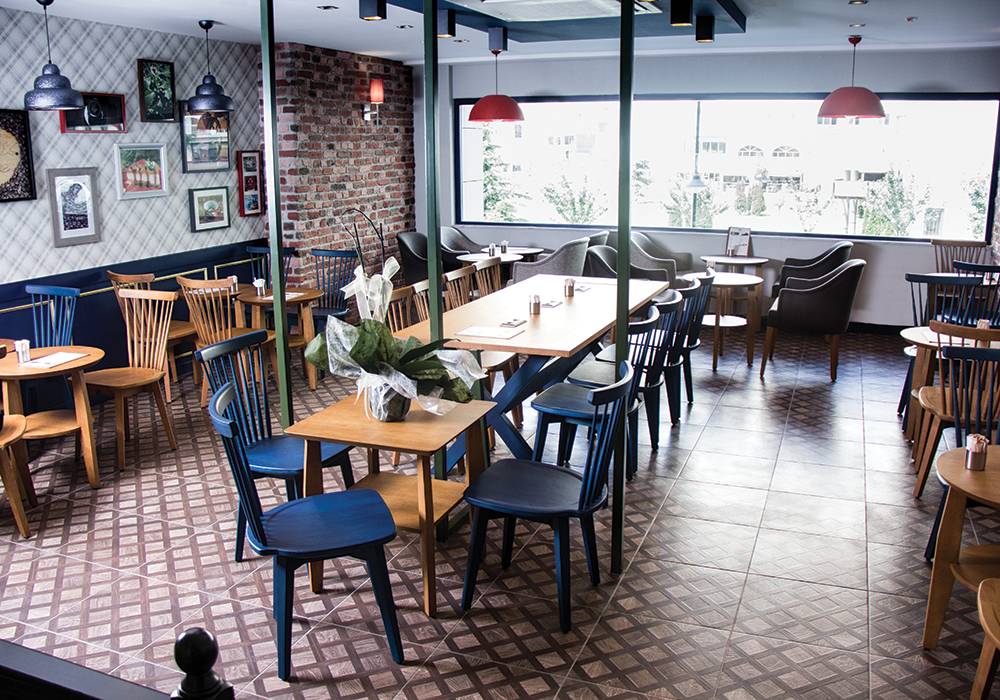
Shaver Lake is not very well known in vacation circles. It doesn’t have the flash, crowds, traffic jams, movie theaters, showrooms, and casinos of Lake Tahoe, but it is infinitely more peaceful and serene, with a special beauty and character of its own. So why isn’t it better known – why is it such a well-kept secret? One can only speculate that it is because when people think of the California mountains for a vacation they think of Lake Tahoe, with its vast vacation resources, or Yosemite which gets a tremendous amount of publicity but is also overrun with visitors. Is Shaver Lake in the shadow of Tahoe and Yosemite? Perhaps. Or, is it because Shaver Lake offers a much lower-key vacation experience, at a slower pace, and people just haven’t discovered it yet? It’s hard to say — many Californians don’t even know where it is.
Just where IS Shaver Lake? It’s in the Central Sierra Nevada mountains, one hour North East of Fresno, two hours South of Yosemite, and surrounded by seven lakes. It’s about half-way between San Francisco and Los Angeles at an elevation of 5,500 feet above sea level. At this elevation it has an average daytime temperature of 75 degrees in the summer, even when it is over one hundred degrees in the San Joaquin Valley below, and yet it is cold enough in the winter to receive enough snow to make it a winter wonderland. The permanent residents number a few hundred, rather the 50,000 that populate the Tahoe Basin.
Imagine a place where you can relax, rejuvenate, and recharge your mind and body. Picture a spectacular mountain lake where you can swim, go boating, fishing, or picnic on a pontoon boat, in an uncrowded environment. See yourself and your family on the deck of a beautiful cabin enjoying the smell of a pine forest, the birds singing, and the cool breeze gently caressing the trees. If a mountain vacation in the middle California is for you, then you might want to consider spending your next vacation at Shaver Lake, staying at ShaverHaven, and discover this vacation secret for yourself.
The “town” of Shaver Lake is a quaint village with several restaurants, a bakery, gift shops, DVD rentals, a hardware store, an auto parts store, a sporting goods store with lake recreation supplies and ski equipment rentals, grocery stores, a post office, and even an internet cafe.
The Lake is stocked with trout and has a reputation for having excellent fishing. If stream fishing is your desire, there are several streams surrounding the lake. Boating is very popular with numerous types of watercraft available such as the previously mentioned pontoon boats, wave runners, kayaks, fishing boats and inflatable toys for towing behind a boat. And the area has some spectacular hiking from easy, level, walks in the woods to challenging ascents up granite cliffs. Hiking guidebooks are available with 35 hikes described in great detail.
There are an abundance of photo opps for photographers–serene meadows full of wildflowers abound and the many granite peaks and valleys are spectacular.
China Peak Ski Resort is just 30 minutes away with 7 chair lifts. The summit is at 8,709 feet with a vertical drop of 1,679 feet to the base lodge at 7,030 feet. Lift tickets are substantially less than in the Tahoe area and senior discounts are available.
Shaver Lake owes its existence to a cast of characters and events that shaped the landscape and the local economy. The area is rich in history, from the building of the Big Creek Hydroelectric System, to the cattle ranching and logging that existed in the early 1900’s. At that time, the Big Creek Project was considered to be the largest construction project in the world. It created Huntington, Florence, and Shaver Lakes. Stories are numerous about the characters and visionaries that made Shaver Lake what it is today. Three of these individuals are John S. Eastwood, C.B. Shaver, and John Harshman.
In the late 1800’s John Eastwood was hired as a surveyor to help C. B. Shaver layout part of his lumber mill operations. Shaver had built a rock filled dam to create a millpond but it was quite small compared to what Shaver Lake would become. It was located about a quarter of a mile East and upstream of where the dam is now.
Eastwood loved the mountains and the forests. It was said that he could put his hand on a tree in the dark and tell you what kind of tree it was. As John spent more and more time in the mountains, he developed an idea for a system of lakes, tunnels, and powerhouses for generating hydroelectric power to be transmitted to the Los Angeles area for their streetcar system. This was long before roads were built and certainly before helicopters were invented; he explored this vast region on foot and horseback. Thus began the development of the region into one of the most pristine vacation destinations in California as well as the site of a colossal hydroelectric power generating system. They not only built dams, but also roads and railroads to support the Project. A maze of tunnels through solid granite mountains was constructed by hard rock miners to carry the water from lake to lake and powerhouse to powerhouse. This water was dubbed “The hardest working water in the world.”
Construction of the first dam, which was to create Huntington Lake, was started in 1911. The dam was completed, as was the first powerhouse, in 1913 and thus began the generation and transmission of electricity, at 150,000 volts, 243 miles to Los Angeles. That was one long extension cord! Florence Dam was next at a higher elevation and was completed in 1926.
In the following years a series of events led to the creation of Shaver Lake and would encompass Shaver’s millpond. C. B. Shaver had died in 1907, the mill was sold to other logging interests, and after a severe snowstorm wiped out part of the operation the mill closed for good.
Meanwhile, Southern California Edison Company, the power company that owned the lakes and powerhouses, had acquired the Shaver property in 1917. Edison Company realized that Florence and Huntington Lakes could not contain the snow runoff – they needed more storage capacity. Hence the construction of the Shaver dam. Construction started in 1926 and was completed two years later. Alas, the old Shaver lumber mill was submerged by the lake and lies under water to this day.
The demand for electricity in the Los Angeles area, after WWII, was insatiable as the population exploded. Edison Company developed plans to expand the system and in the 50’s four more dams were built with the resulting creation of David H. Redinger Lake in the foothills and Edison, Courtright, and Wishon reservoirs established in the high country. Actually, Courtright and Wishon are not officially part of the Big Creek Project but they are in the vicinity and add to the power generating capacity and recreation facilities in the area. All were built for the generation of hydroelectric power.
David Redinger started out as a surveyor for the project in 1912 (it was to be a one or two-year job and he would move on) but soon was promoted to Resident Engineer for the Project and held that position until his retirement in 1949. Fortunately, David and Edith Redinger were on hand for the dedication of Redinger Lake.
In 1960 the Mammoth Pool Reservoir system was created by the construction of another dam and accompanying powerhouse. In 1987 the John S. Eastwood powerhouse was completed in an underground room hollowed out of solid granite near the shore of Shaver Lake, along with its companion tunnels also dug through solid granite.
In total, six major reservoirs were created, 27 dams were built, (Huntington itself has three) and the water in just one river, the San Joaquin, passes through 24 generating units in 9 powerhouses. The electricity generated supplies power to 4.3 million customers in 800 cities. This was a BIG project. In addition, flood control and the distribution of water to farmers in the San Joaquin Valley has become extremely important. From the vacationers’ standpoint the recreation facilities have been incredible and have delighted millions of visitors over the years.
About the time the Shaver Dam was completed, in 1928, John Harshman came to Shaver Lake from Ohio to fish. Since the fishing was pretty good, he decided to stay. But more than a fisherman, he was quite a pioneer and entrepreneur and started several businesses, all in one small building called the Trading Post. Eventually he had a grocery store, restaurant, soda fountain, meat market, post office and a gas station. The Trading Post is still there as a restaurant and bar and is a favorite of both locals and vacationers.
John and his wife Velma acquired a large lake front property about 2 miles from “downtown” Shaver Lake. It was known as Johnny’s at the Point. True to form, John established a restaurant, bar, gas station, grocery store, rental cabins, boat dock, and boat rental. This was the first marina at Shaver Lake. John constructed a floating dock by mounting timbers on top of 55 gallon barrels. It was a large party barge and was anchored to the bottom so it would stay put. Water skiers would drop by and spend time socializing. Soon a second barge appeared followed by a fancy one mounted on pontoons. The pontoon party boat was born. Now there are dozens of pontoon boats on the lake during the summer – some privately owned but most are rented out by the two marinas on the lake. They range in size from a basic 4-passenger boat 16 feet long with a 20 hp motor to a deluxe 12 passenger at 24 feet, 50 hp motor, padded seats, towing allowed, and a gas barbeque on board.
Logging and dam building were very large commercial enterprises in the area and poured a great deal of money into the local economy for many years. The logging and cattle ranching operations will be covered in upcoming articles, but for now, we can see how the three pioneers, Eastwood, Shaver, and Harshman were instrumental in shaping the character and culture of the area. Today we can take advantage of their vision and hard work as we engage in a multitude of outdoor activities.
So, the secret is revealed. There is something for everyone at Shaver Lake whether in the summer or winter. Off-seasons–May, June, September, and October–offer their own special attractions such as wildflowers and waterfalls in the Spring, vivid colors in the Fall, no crowds and an extremely peaceful environment. Vacationers who take advantage of the recreation opportunities at Shaver Lake, in any season, will not be disappointed.





